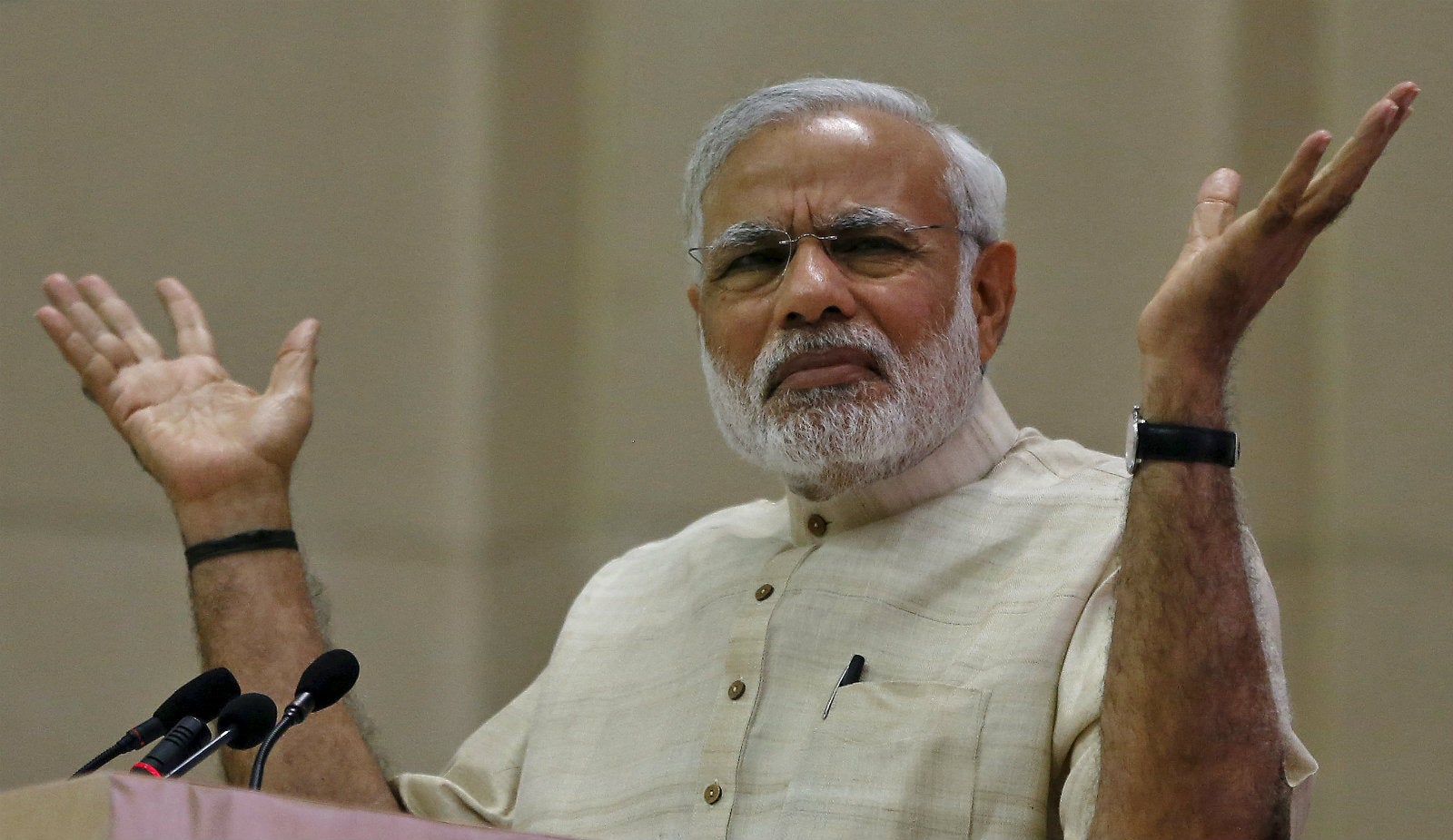How long will it take for rating agencies to back Narendra Modi’s growth dreams?
In 2014, Narendra Modi came to power promising to kickstart India’s growth engine.


In 2014, Narendra Modi came to power promising to kickstart India’s growth engine.
Almost 30 months later, the country is the world’s fastest-growing major economy. But it doesn’t get much credit for this from big rating firms. On Nov. 16, for instance, Moody’s affirmed India’s sovereign rating, maintaining a positive outlook. The agency acknowledged the reforms undertaken till now by the Modi government but said that economic conditions were still not conducive enough for an upgrade.
“The reform effort to date has not yet achieved the conditions that would support an upgrade to ‘Baa2,’ in particular in accelerating private investment to support high, stable growth, without which the government’s debt burden, a key constraint on the rating, is likely to remain high for a sustained period,” Moody’s explained.
Earlier this month, Standard & Poor’s, too, decided to stay put. It affirmed India’s sovereign credit rating of “BBB-“, just one notch above junk. S&P said it “does not expect to change the rating this year or next.”
The lack of an upgrade, in many senses, came as a rude shock to the government. ”India now has higher economic growth than China and, of course, the expectation was that of an upgrade,” said Lourdes Casanova, senior lecturer at the Johnson School of Management, Cornell University.
It takes time for reforms to show tangible results, which are then factored into the rating process. ”Credit ratings agencies have a history of being quick to downgrade a country and slow to upgrade,” noted Angela Bouzanis, senior economist at FocusEconomics in Barcelona.
Stringent rating processes
Lately, global rating agencies are being stringent with their outlook towards emerging markets. In turn, emerging nations are being assertive and critical of these agencies, explained Cornell’s Casanova.
“The big three (S&P, Moody’s, and Fitch) have been criticised as being too rigorous with emerging markets ratings and too lax on domestic (the US and the UK, in Fitch’s case) companies or financial instruments,” Casanova said. Such criticism is mostly because of the agencies’ bias while judging companies and countries they don’t know well.
The Modi government, too, has responded by questioning the methodology. ”The report of S&P says all the right things done by India,” Shaktikanta Das, India’s economic affairs secretary, told reporters. The lack of an upgrade “does not bother us so much but it calls for an introspection among those who do the rating.”
Besides, it is not just ratings that the Indian government is unhappy about.
Not just ratings
In October, the World Bank announced its latest ease-of-doing-business rankings in which India jumped just one spot to 130th place despite focused efforts by the government to scale the rankings. (Modi wants India in the top 50 by 2018.) Nirmala Sitharaman, the commerce and industry minister, said at the time that she was “disappointed,” and the Economic Times reported that Modi’s office will examine India’s performance.
However, indicators such as these are rarely based on holistic assessments and shouldn’t be treated as the last word. The Doing Business list, for instance, only used data from Delhi and Mumbai, which isn’t representative of the whole country, said Milan Vaishnav, senior associate for the South Asia Program at the Carnegie Endowment for International Peace. Neither did the ranking take into account the many policy measures taken since this June.
The gaps in the economy
While ratings and rankings do have their drawbacks, there is enough weakness in the economy that needs fixing. In its note, S&P highlighted that a wide fiscal deficit, high debt, and low per-capita income are factors getting in the way of India’s progress up the rating scale.
This doesn’t mean things aren’t changing. India is doing well on some of the traditional measures of creditworthiness—GDP, for example. But when it comes to GDP per capita, Asia’s third-largest economy lags far behind.
“India’s GDP per capita was $1,618 in fiscal 2015 and we expected it to grow moderately to $1,766 in 2016 and $1,928 in 2017,” Bouzanis said. ”This is below countries rated at a similar level, such as Hungary and Morocco.”
But with India’s recent efforts to crack down on tax evasion and counterfeit currency, rating agencies might take note soon. “With demonetisation of notes and GST, hopefully not this quarter but over the next six-seven quarters, there will be an improvement in the fiscal debt-to-GDP ratio by virtue of expansion of denomination, and improvement in the fiscal tax-to-GDP ratio by virtue of better tax collection,” Nilesh Shah, managing director of Kotak Asset Management, told the Economic Times in an interview.
“This gives solid ground for rating agencies to upgrade India and consider the fact that from the Harappa days till today we have not defaulted to any foreigners,” he added.